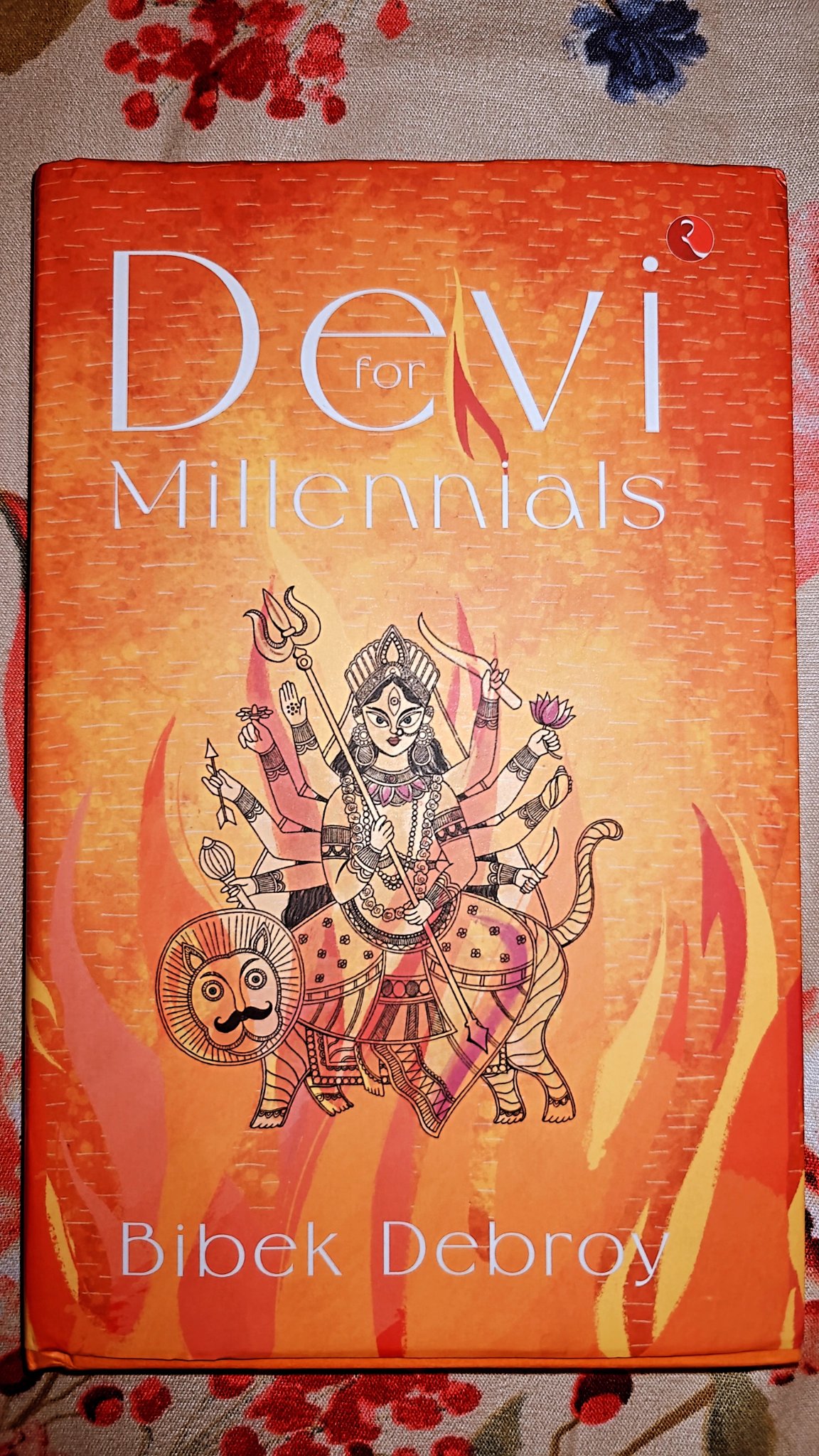I went into reading this book with high expectations, and I was… disappointed? But that’s probably on me.
I wanted something which inspires me to explore the rich Indian culture that I know only sparsely about, at the same time holding my hand over the things I don’t know. It does do the former very well, but the latter, not so much. A lot of questions are answered, but it raises even more questions the more you read.
My biggest gripe with this book is, it doesn’t explain things sufficiently well (to me). The author assumes that the reader would already probably know of it because they’re clearly clever enough to pick up this book to read. But even as a person already knowing the general concepts - a lot of it was assumed to be already known by the reader. This leads me to probably miss a lot of context and the references that I should be seeing, but in the author’s defence, there’s just too many references in Indian literature. However, I still would have wanted to have things slow, and in a bit of an ELI5 form. Web links would also have worked. But I’m not 5, nor am I a millennial (or am I? I always forget where the line lies. Google answers - yes, I’m a millennial).
Anyway, if you’re a millennial like me, you’re probably not understanding a lot of it in this book. Perhaps you have an exceptional family who know and already follow the scriptures, but for someone like me whose family is moderately religious, and only follows certain traditional rituals, you’ll be scratching your heads, just like I did. Not your fault, though. Honestly, I probably disappointed Bibek Debroy ji, and I really admire him as an author and as a person who is probably the one who lit the fire in me for Indian culture.
To Bibek ji’s credit, he admits that the book is more of something that inspires exploration, and deliberately misses answering the questions that might arise in our minds. As a person of an honest scientific temperament, he refuses to opine on things in this book, and strictly sticks to facts and literal translations, as like his other books. He does open us up to a world unknown, the shlokas from Vedas, the Devi Bhagvata Purana, shlokas from Adi Shankaracharya, the numerous and always changing Shaktipeethas, the ways of worship, the forms of Devi, the descriptions of Devi, the characteristics, and how it ties into the worship of the Brahman. And it’s beautiful. To think that people wrote all of this, in praise of the divine femininity, is an eye-opener to the rich culture and thinking that India has had. And this text is not even touching the surface!
When I started to read the book, I decided that I’d probably read each Sanskrit shloka mentioned by myself. However, my skill as a reader of Sanskrit/Devanagari was questioned, and admittedly, I didn’t satisfy that very well, so much so that I questioned if I even knew it in the first place! If I did try to read all the shlokas, I would have been much more likely to mess it up with a different meaning altogether. Not to mention the additional 3-5 months it would take me to complete this book, by the time I probably would have abandoned it. With this respect, it is good to know what Shloka’s are just words. Shlokas aren’t magical words, which, if spoken, will grant you your desires. Well, they will, but not if you don’t understand what you’re speaking/reading. Remember the power of manifestation? Or quotes like “You are as you think”. It’s true. And it always has been. And we’ve lost touch with enough Sanskrit to just repeat the shlokas verbatim without thought. I thought it’d be a better idea, practically, and for easier comprehension to just read the English meaning of the shlokas.
Would I recommend this book to be read by everyone? No, not really. Casual readers would just zone out. Non readers would probably keep it as a show-piece. Should you read it, though? Yes, at least once. It will probably ignite the fire that you had always been dreaming of, or at least let you know that you have to still learn a lot.
To put it in Bibek ji’s words:
[Devi] is the one who made me write it. She is the one who will make you read it or ignore it. Ya Devi sarvagrantheshu! Nothing more needs to be said.
Just after I wrote the review, I found this tweet by Nassim Nicholas Taleb: https://twitter.com/nntaleb/status/1871573854717636636
A convincing argument of the role of language is the existence of surviving holy languages, uncorrupted by the no-nonsense tests of daily use. Semitic religions, that is Judaism, Islam, and original Christianity understood the point; keep a language away from the rationalization of daily use and avoid the corruption of the vernacular. Four decades ago, the Catholic church translated the services and liturgies from Latin to the local vernaculars; it can be argued that this caused a drop in religious beliefs. Suddenly religion subjected itself to being judged by intellectual and scientific, without the aesthetic, standards.
How relevant do you think would this be for Sanskrit?
